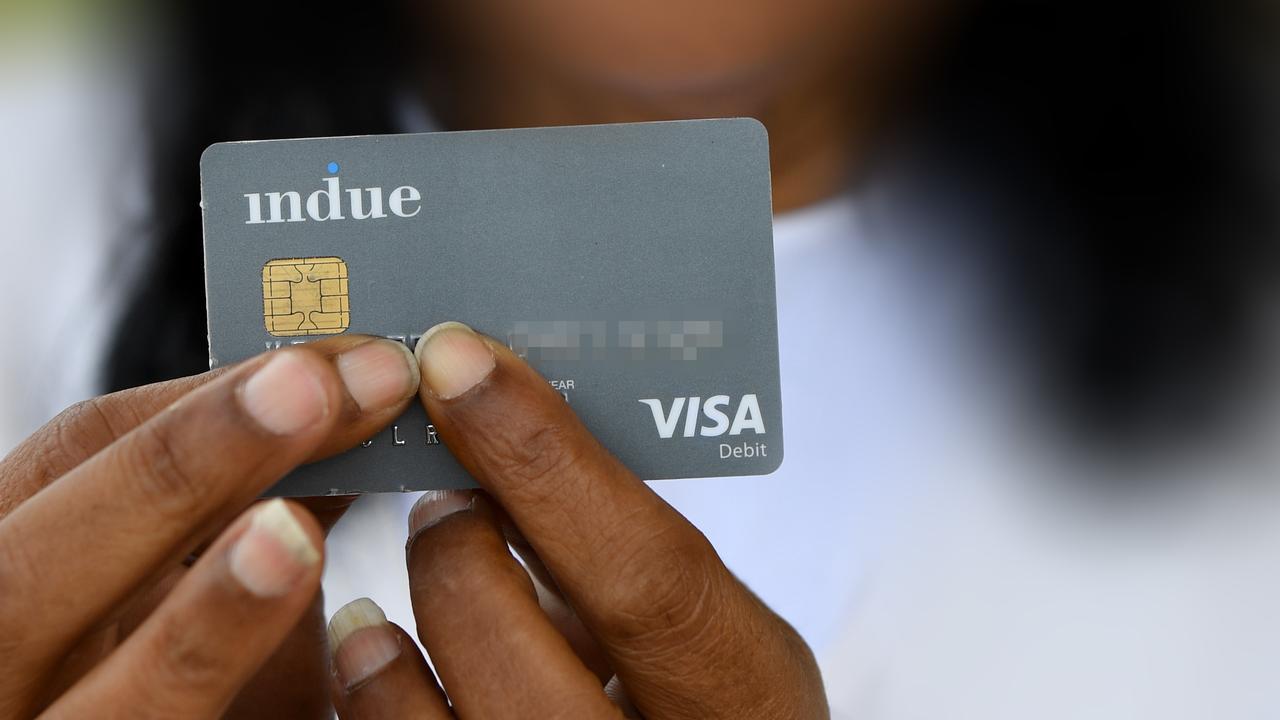Introduction
Welcome to the world of cashless treatment, where medical expenses can be seamless and hassle-free. In today’s fast-paced digital age, the concept of cashless treatment has gained immense popularity and transformed the way healthcare services are availed. Gone are the days when individuals had to bear the burden of upfront payments and then grapple with the tedious process of reimbursement. Cashless treatment has emerged as a boon for millions, providing convenience, financial security, and peace of mind.
Cashless treatment refers to a medical facility wherein patients can receive necessary healthcare services without the need for immediate cash payment. It is an arrangement between healthcare providers and insurance companies or third-party administrators (TPAs), facilitating the settlement of medical bills directly without any financial burden on the patient.
Imagine a scenario where you or your loved ones need medical attention, and all you need to do is present your insurance card at the hospital reception. The medical expenses incurred will be directly settled between the hospital and the insurance company, sparing you the immediate burden of payment. Cashless treatment simplifies the healthcare journey, allowing patients to focus on their well-being rather than worrying about financial matters.
The effectiveness of cashless treatment lies in the seamless coordination among the stakeholders involved – insurance companies, healthcare providers, and policyholders. It involves establishing a network of hospitals and healthcare centers where policyholders can avail cashless treatment. The insurance company or TPA, in collaboration with these hospitals, pre-negotiates the rates for different medical procedures, ensuring transparency and cost control.
Once a policyholder seeks medical treatment at a network hospital, the hospital verifies the policy details and approves cashless treatment if the policyholder is eligible. The billing and settlement process are then handled directly by the hospital and the insurance company or TPA, without any monetary involvement from the policyholder.
The growing popularity of cashless treatment can be attributed to its numerous benefits, including convenience, financial security, and hassle-free claim settlement. In the following sections of this article, we will delve deeper into how cashless treatment works, the benefits it offers, the insurance companies providing this facility, the required documents, the procedure to avail cashless treatment, as well as some limitations to keep in mind.
Definition of Cashless Treatment
Cashless treatment is a healthcare facility where policyholders can receive medical services without the need for immediate cash payments. It is a seamless arrangement between insurance companies or third-party administrators (TPAs) and healthcare providers that allows for the direct settlement of medical bills.
In a cashless treatment scenario, policyholders are required to present their insurance cards or policy details at the network hospitals. The hospitals then verify the policy information and, upon approval, provide the necessary medical services without requiring any upfront payment from the policyholder.
The concept of cashless treatment has gained popularity due to its convenience and financial security. It eliminates the burden of immediate payment during medical emergencies and allows individuals to access quality healthcare services without worrying about the financial aspect.
Under cashless treatment, the insurance companies or TPAs have tie-ups with a network of hospitals and healthcare providers. These hospitals are part of the insurance company’s network and agree to provide healthcare services to policyholders without requiring upfront payment.
When a policyholder seeks medical treatment at a network hospital, the hospital verifies the policy details and checks if the treatment is covered under the policy. Once the treatment is approved, the hospital directly coordinates with the insurance company or TPA for the settlement of medical expenses.
The insurance company or TPA pays the hospital directly based on the agreed-upon rates for various medical procedures. Policyholders are only responsible for paying any deductible or co-payment amount specified in their insurance policy.
It’s important to note that cashless treatment is subject to the terms and conditions of the insurance policy. Not all medical expenses may be eligible for cashless treatment, and there may be certain exclusions or limitations as per the policy terms.
With the advancement of technology and digitization in the healthcare industry, cashless treatment has become more efficient and accessible. Many insurance companies now provide mobile apps and online portals to streamline the cashless treatment process, making it even more convenient for policyholders.
In the following sections of this article, we will explore how cashless treatment works, the benefits it offers, the list of insurance companies providing this facility, the required documents, the procedure to avail cashless treatment, as well as some limitations to keep in mind.
How Does Cashless Treatment Work?
Cashless treatment works through a systematic process involving insurance companies, network hospitals, and policyholders. Here’s a step-by-step breakdown of how cashless treatment works:
- Policyholder verification: The policyholder presents their insurance card or policy details at a network hospital when seeking medical treatment. The hospital verifies the policyholder’s eligibility and coverage.
- Pre-authorization: Once the policyholder’s eligibility is confirmed, the hospital requests pre-authorization from the insurance company or TPA. Pre-authorization involves obtaining approval for the proposed medical treatment and estimating the cost involved.
- Verification and approval: The insurance company or TPA reviews the pre-authorization request and verifies the details. If the treatment is found to be covered under the policy, the request is approved, and the policyholder receives confirmation.
- Treatment and medical services: After receiving approval, the policyholder undergoes the necessary medical treatment and services at the network hospital. The hospital records all the medical procedures, medications, and expenses incurred during the treatment process.
- Billing and settlement: Once the treatment is completed, the hospital generates a bill detailing the medical expenses. The bill is then sent to the insurance company or TPA for settlement.
- Direct payment: The insurance company or TPA reviews the bill and directly settles the approved amount with the hospital. This ensures that the policyholder does not need to make any immediate cash payments.
- Policyholder liability: Policyholders are responsible for paying any deductible or co-payment amount as specified in their insurance policy. This is the portion of the medical expenses that the policyholder has agreed to bear.
- Claim reconciliation: After the settlement, the insurance company or TPA reconciles the claim, verifies the payments made, and ensures that all expenses are in accordance with the policy terms.
- Claim status update: Once the claim is processed and reconciled, the insurance company or TPA updates the policyholder on the claim status. This includes communicating any outstanding amounts, if applicable.
It is important for policyholders to understand the terms and conditions of their insurance policies, including what medical treatments are covered, any waiting periods, and limitations on coverage. Not all medical expenses may be eligible for cashless treatment, and certain exclusions or restrictions may apply based on the policy terms.
By streamlining the medical billing and payments process, cashless treatment offers a convenient and stress-free experience for policyholders. It eliminates the need for immediate cash payments, ensuring that individuals can focus on receiving the necessary healthcare services without financial worries.
In the next sections, we will explore the benefits of cashless treatment, provide a list of insurance companies offering this facility, discuss the required documents, outline the procedure to avail cashless treatment, and highlight some limitations to keep in mind.
Benefits of Cashless Treatment
Cashless treatment offers numerous advantages for policyholders, making it an attractive healthcare option. Let’s explore some of the key benefits:
- Convenience: Cashless treatment provides convenience by eliminating the need for policyholders to make upfront payments. It saves individuals from the hassle of arranging immediate funds during medical emergencies. They can focus on receiving the necessary healthcare services without worrying about the financial aspect.
- Financial Security: Cashless treatment provides a sense of financial security. Policyholders do not have to worry about the immediate burden of payment, especially for costly medical treatments or surgeries. They can rest assured that their insurance coverage will take care of the expenses directly, within the policy limits.
- Streamlined Process: Cashless treatment simplifies the healthcare process. Policyholders can easily access medical services by presenting their insurance card or policy details at network hospitals. The verification and settlement process between the hospital and insurance company or TPA are streamlined, ensuring a smooth experience for everyone involved.
- Choice of Hospitals: Cashless treatment allows policyholders to choose from a network of hospitals and healthcare providers associated with their insurance plan. They can opt for renowned hospitals or specialized healthcare centers within the network, giving them access to quality medical services.
- Reduced Financial Burden: With cashless treatment, policyholders do not have to pay for medical expenses out of their pockets initially and then go through the cumbersome process of reimbursement. The direct settlement between the hospital and insurance company or TPA reduces the financial burden on the policyholder and offers a smoother experience.
- Transparency and Cost Control: Cashless treatment ensures transparency in the billing process. The insurance company or TPA pre-negotiates the rates for various medical procedures with network hospitals, preventing any inflated or surprise charges. This helps in cost control and allows policyholders to have a clear understanding of their medical expenses.
- Savings on Out-of-Pocket Expenses: By opting for cashless treatment, policyholders can save money on out-of-pocket expenses. They only need to pay for any deductible or co-payment amounts as specified in their insurance policy, while the remaining approved expenses are directly settled by the insurance company or TPA.
- Peace of Mind: Cashless treatment provides peace of mind to policyholders and their families. It offers a safety net during medical emergencies, knowing that necessary medical services will be provided without immediate financial constraints. This peace of mind allows individuals to focus on their recovery and well-being.
Overall, cashless treatment revolutionizes the healthcare experience by providing convenience, financial security, and a streamlined process. Policyholders can avail quality medical services without worrying about the immediate burden of payment, ensuring a stress-free and seamless healthcare journey.
In the upcoming sections, we will provide a list of insurance companies offering cashless treatment, discuss the documents required to avail this facility, outline the procedure for cashless treatment, and highlight some limitations to be aware of.
List of Insurance Companies Offering Cashless Treatment
Many insurance companies recognize the importance of cashless treatment and provide this facility to their policyholders. Here is a list of some prominent insurance companies that offer cashless treatment:
- ABC Insurance: ABC Insurance is known for its wide network of network hospitals, providing cashless treatment to policyholders across various cities and towns. They offer comprehensive health insurance plans with cashless treatment benefits.
- XYZ Health Insurance: XYZ Health Insurance provides extensive coverage for medical expenses and has a strong network of hospitals and healthcare providers. Policyholders can avail cashless treatment at network hospitals across the country.
- DEF Insurance: DEF Insurance is committed to providing quality healthcare services through its cashless treatment facility. They have partnered with reputed hospitals and offer a seamless experience to policyholders.
- GHI Health Insurance: GHI Health Insurance focuses on ensuring financial security and convenience for policyholders through cashless treatment. Their network hospitals provide access to a wide range of medical services.
- PQR Insurance: PQR Insurance offers cashless treatment options as part of their comprehensive health insurance plans. With an extensive network of hospitals, policyholders can avail hassle-free medical services.
- MNO Health Insurance: MNO Health Insurance emphasizes the importance of cashless treatment for policyholders. They have a robust network of hospitals and aim to provide a seamless healthcare experience.
- RST Insurance: RST Insurance provides cashless treatment facilities to ensure policyholders have easy access to healthcare services without financial burdens. They have tie-ups with reputed hospitals across the country.
- LMN Health Insurance: LMN Health Insurance offers cashless treatment options with its health insurance plans. They have a wide network of hospitals and aim to simplify the healthcare journey for policyholders.
- OPQ Insurance: OPQ Insurance understands the importance of cashless treatment and provides this facility to policyholders. Their network hospitals ensure that policyholders receive quality healthcare services without the need for immediate cash payments.
- UVW Health Insurance: UVW Health Insurance offers cashless treatment benefits as part of their health insurance plans. Policyholders can avail medical services at their network hospitals without any financial hassle.
Please note that this list is not exhaustive, and there are several other insurance companies that offer cashless treatment facilities to their policyholders. It is advisable to consult with insurance providers directly to get a detailed understanding of their specific cashless treatment policies and network hospitals.
In the upcoming sections, we will discuss the required documents for cashless treatment, provide an overview of the procedure to avail cashless treatment, and highlight some limitations to keep in mind.
Documents Required for Cashless Treatment
When availing cashless treatment, policyholders are required to provide certain documents to facilitate the smooth processing of their medical claims. The specific documents may vary slightly depending on the insurance company and the policy terms. Here are the commonly required documents for cashless treatment:
- Insurance Card: Policyholders need to present their insurance cards at the network hospital. The card contains essential information, such as the policyholder’s name, policy number, and contact details, which help in verifying the policy eligibility.
- Policy Documents: It is important to carry a copy of the insurance policy documents, including the policy schedule and terms and conditions. These documents outline the coverage details, including the specific medical treatments and procedures covered under the policy.
- Identity Proof: Policyholders must carry a valid government-issued identification proof, such as a passport, Aadhaar card, or driver’s license. This helps in establishing the identity of the policyholder and ensuring the accuracy of the information provided.
- Prescription and Medical Reports: If the policyholder is seeking treatment for a specific medical condition, they may be required to provide the prescription from the treating doctor and any relevant medical reports or test results. This helps in verifying the necessity of the medical treatment.
- Pre-authorization Form: For planned or non-emergency treatments, the insurance company or the network hospital may require the policyholder to fill out a pre-authorization form. This form includes details about the proposed treatment, estimated costs, and other relevant information. It is crucial to submit this form to obtain approval for cashless treatment.
- Hospital Admission Form: At the time of admission to the network hospital, policyholders may be required to complete the hospital’s admission form. This form captures essential information, such as personal details, medical history, allergies, and contact information, which helps in providing appropriate medical care.
- Discharge Summary: After the completion of the treatment, the network hospital provides a discharge summary. This document outlines the details of the medical procedures, medications administered, and any post-treatment instructions. It is an essential document in the claim settlement process.
- Any Other Relevant Medical Documents: Depending on the nature of the medical treatment, there may be additional documents required. This could include imaging reports, laboratory test reports, surgical notes, or any other medical records that support the necessity of the treatment.
It is advisable to keep both physical and digital copies of all the required documents for reference and easy access. Additionally, policyholders should make sure to thoroughly understand the specific documentation requirements of their insurance company to avoid any delays or complications in the cashless treatment process.
Now that we understand the documents required for cashless treatment, let’s move on to discussing the procedure to avail cashless treatment.
Procedure for Cashless Treatment
The procedure to avail cashless treatment involves a series of steps that need to be followed by policyholders. Understanding the process can help policyholders navigate through the system smoothly. Here’s a detailed overview of the procedure for cashless treatment:
- Choose Network Hospital: Policyholders need to select a hospital or healthcare provider that is part of the insurance company’s network. This information can usually be found on the insurance company’s website or by contacting their customer service.
- Verify Policy Details: At the network hospital, policyholders need to provide their insurance card and other necessary documents to verify their policy details. This helps in confirming their eligibility for cashless treatment.
- Submit Pre-Authorization Request: For planned or non-emergency treatments, policyholders may be required to fill out a pre-authorization request form. This form includes details about the proposed treatment, estimated costs, and other relevant information. It needs to be submitted to the hospital, which will then forward it to the insurance company or TPA for approval.
- Wait for Approval: The insurance company or TPA reviews the pre-authorization request and verifies the details. If the treatment is covered under the policy and the necessary criteria are met, the approval is granted. The policyholder receives confirmation about the approval status.
- Undergo Treatment: Once the approval is obtained, policyholders can proceed with the required medical treatment. The hospital or healthcare provider will provide the necessary care as per the approved treatment plan.
- Billing and Settlement: After the treatment, the hospital generates a bill detailing the medical expenses incurred. The bill, along with other necessary documents, is submitted to the insurance company or TPA for settlement. The insurance company or TPA directly coordinates with the hospital for the payment.
- Pay Deductibles or Co-payment: Policyholders are usually responsible for paying any deductible or co-payment amount as specified in their insurance policy. This includes the portion of the medical expenses that they have agreed to bear.
- Claim Reconciliation: The insurance company or TPA reconciles the claim, verifying the payments made and ensuring that all expenses are in accordance with the policy terms. They may communicate with the policyholder or hospital for any additional information or clarification, if required.
- Claim Status Update: Once the claim is processed and reconciled, the insurance company or TPA updates the policyholder on the claim status. This includes communicating any outstanding amounts, if applicable.
It is important to note that the specific steps and requirements may vary slightly depending on the insurance company and the policy terms. It is advisable for policyholders to check and familiarize themselves with the specific procedure outlined by their insurance provider.
By following these steps and adhering to the requirements, policyholders can smoothly navigate through the cashless treatment process, ensuring a hassle-free experience in availing quality healthcare services.
Now let’s discuss some limitations to be aware of when it comes to cashless treatment.
Limitations of Cashless Treatment
While cashless treatment offers numerous benefits, it is important to be aware of its limitations and potential challenges. Understanding these limitations can help policyholders manage their expectations and make informed decisions. Here are some common limitations of cashless treatment:
- Network Hospital Availability: Cashless treatment can only be availed at hospitals and healthcare providers that are part of the insurance company’s network. Availability may vary depending on the location, and policyholders may need to travel or make arrangements to access network hospitals.
- Specific Coverage and Exclusions: Cashless treatment may not cover all medical treatments or expenses. Certain procedures, elective treatments, cosmetic surgeries, and pre-existing conditions may be excluded from cashless treatment coverage. Policyholders should carefully review the policy terms and conditions to understand the specific coverage and exclusions.
- Co-payment and Deductibles: Policyholders may be responsible for paying a portion of the medical expenses themselves as co-payment or deductibles. These amounts are predetermined by the insurance policy and need to be paid directly by the policyholder to the hospital or healthcare provider.
- Policy Limitations and Waiting Periods: Cashless treatment may be subject to policy limitations, such as the maximum coverage limit or waiting periods for specific treatments. Policyholders need to be aware of these limitations and plan accordingly.
- Incomplete Documentation: Cashless treatment requires accurate and complete documentation for smooth processing of claims. Any missing or incomplete documents can lead to delays or denials in the cashless treatment process. Policyholders should ensure that they provide all the necessary documentation in a timely and proper manner.
- Treatment Not Covered: In some cases, the insurance company or TPA may deem certain treatments or procedures as not covered under the policy. This could be due to various reasons, such as non-essential or experimental treatments. Policyholders should clarify the coverage of specific treatments with their insurance provider in advance.
- Network Hospital Quality: While insurance companies strive to include reputed hospitals in their network, the quality of healthcare services may vary. Policyholders should research and inquire about the network hospital’s reputation, facilities, and expertise to ensure they receive the desired level of care.
- Claim Rejection: In certain cases, the insurance company or TPA may reject the cashless treatment claim due to non-compliance with policy terms or other factors. Policyholders should be prepared for the possibility of claim rejection and have alternative payment arrangements in such situations.
- Administrative and Procedural Delays: Some administrative and procedural delays may occur during the cashless treatment process. This could include delays in obtaining pre-authorization, claim settlement, or clarifications from the insurance company. Policyholders should maintain regular communication with the hospital and insurance provider to expedite the process.
- Additional Expenses: While cashless treatment covers the approved medical expenses, policyholders may still incur additional out-of-pocket expenses for non-medical items, such as food, attendant charges, or any ancillary services not covered under the policy.
It is essential for policyholders to thoroughly understand the limitations and terms of their insurance policy to make informed decisions about their healthcare needs. By being aware of these limitations, policyholders can better navigate the cashless treatment process and set realistic expectations.
With this understanding of the limitations, let’s conclude the discussion on cashless treatment.
Conclusion
Cashless treatment has undoubtedly revolutionized the healthcare industry, offering policyholders a convenient, secure, and streamlined way to access quality medical services. By eliminating the need for immediate cash payments and simplifying the billing process, cashless treatment has transformed the healthcare experience for millions of individuals.
Through a systematic procedure involving insurance companies, network hospitals, and policyholders, cashless treatment ensures that individuals can receive necessary medical treatment without the financial burden. The verification of policy details, pre-authorization process, and direct settlement of medical expenses create a seamless healthcare journey.
There are several benefits to cashless treatment. It provides convenience, financial security, and peace of mind to policyholders. The choice of network hospitals, reduced financial burden, and transparency in billing contribute to a stress-free healthcare experience.
However, it is essential to be aware of the limitations of cashless treatment. Policyholders must understand the specific coverage, exclusions, co-payments, and other policy terms to effectively utilize this facility. It is also important to keep all the required documents handy and ensure their accuracy and completeness.
Several insurance companies offer cashless treatment facilities to their policyholders, each with their own network of hospitals. Policyholders should research and select an insurance company with a robust network that meets their specific healthcare needs.
In conclusion, cashless treatment serves as a powerful tool in ensuring accessible and affordable healthcare services. It simplifies the payment process, reduces the financial burden on policyholders, and provides much-needed peace of mind during medical emergencies. With proper understanding and careful consideration, policyholders can take advantage of cashless treatment and experience a seamless and worry-free healthcare journey.

























